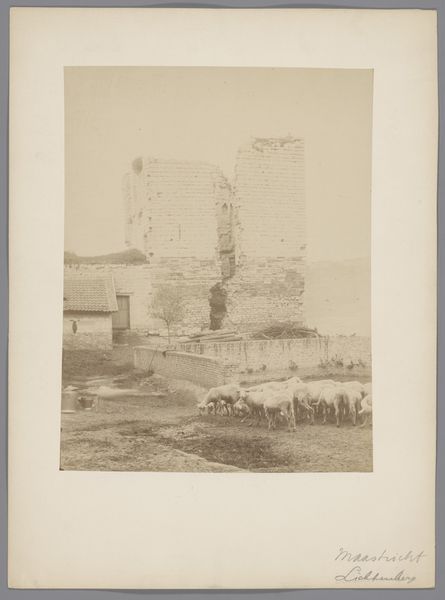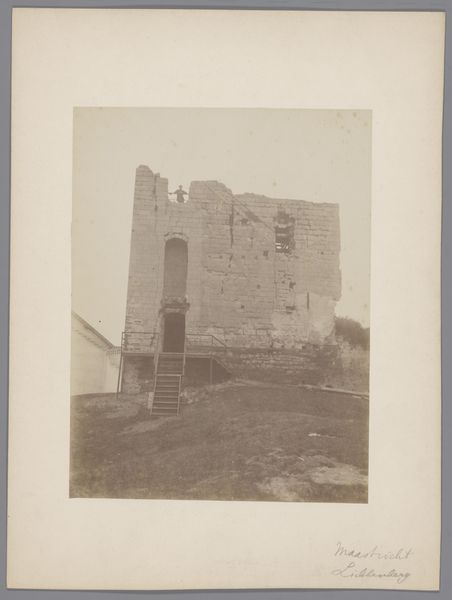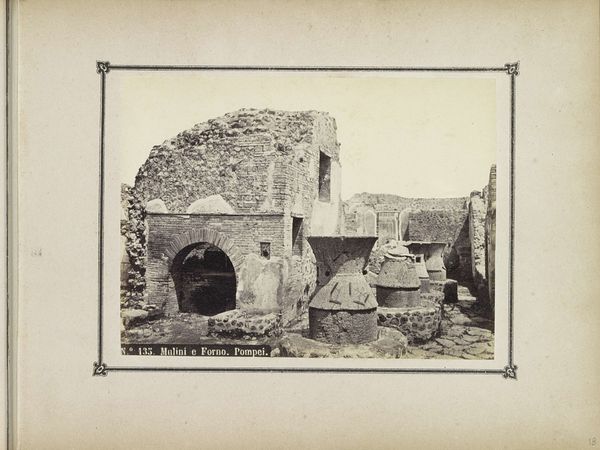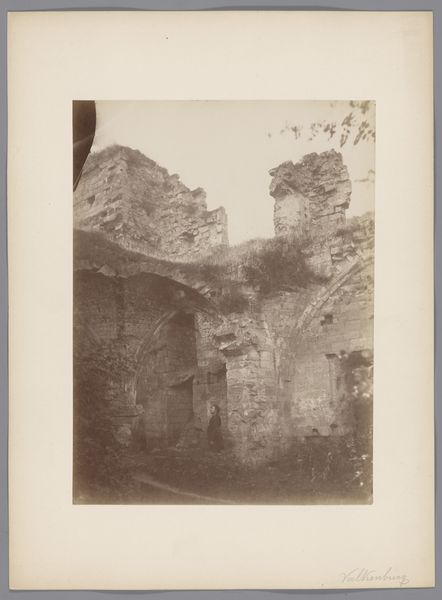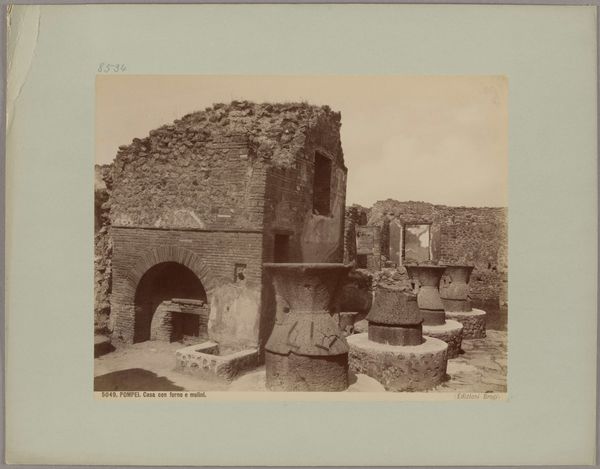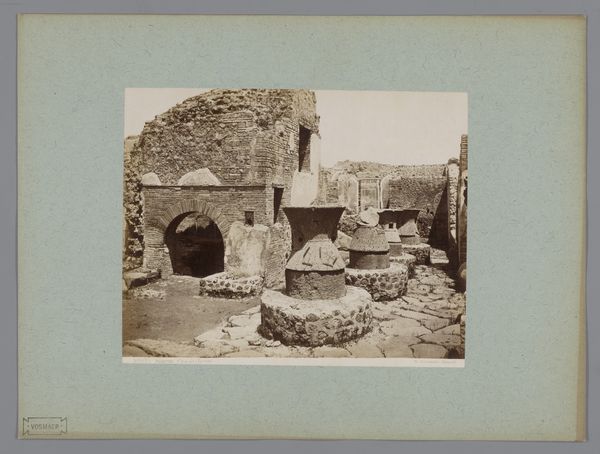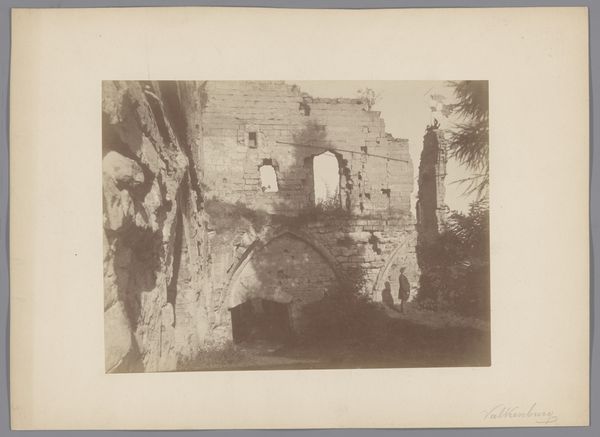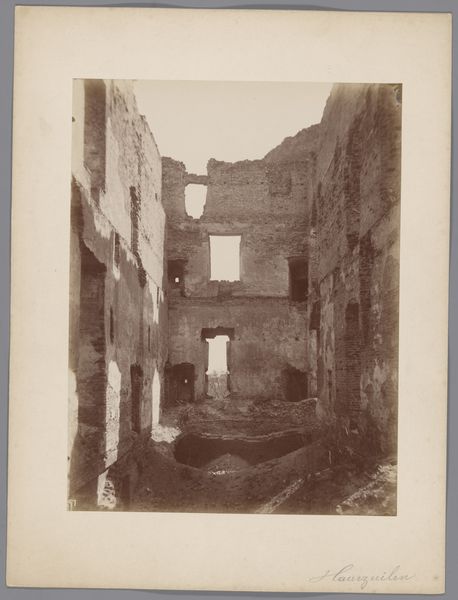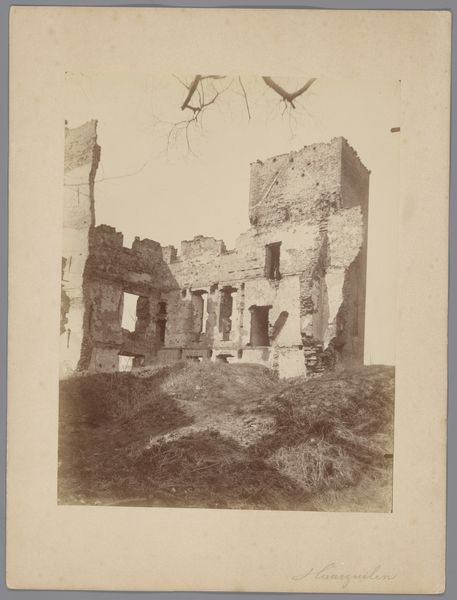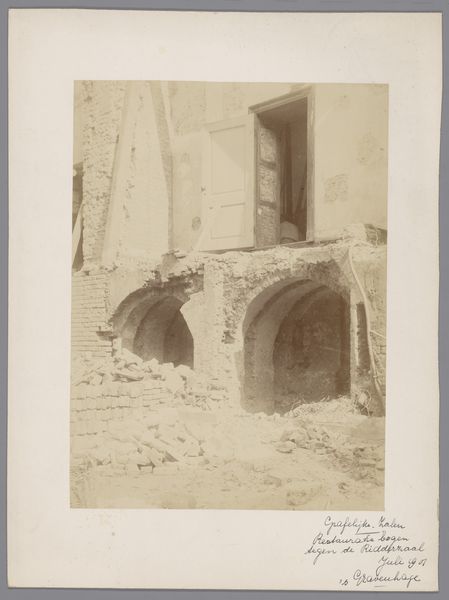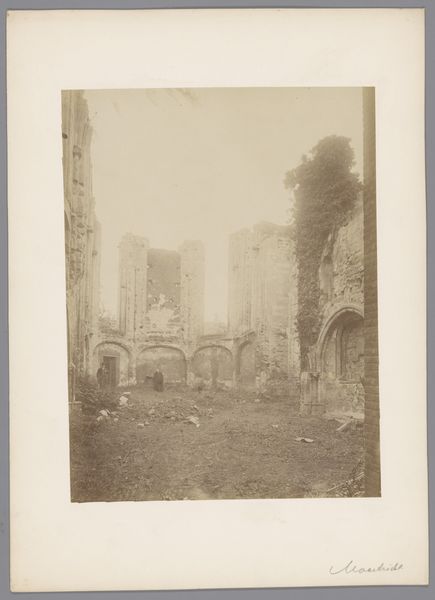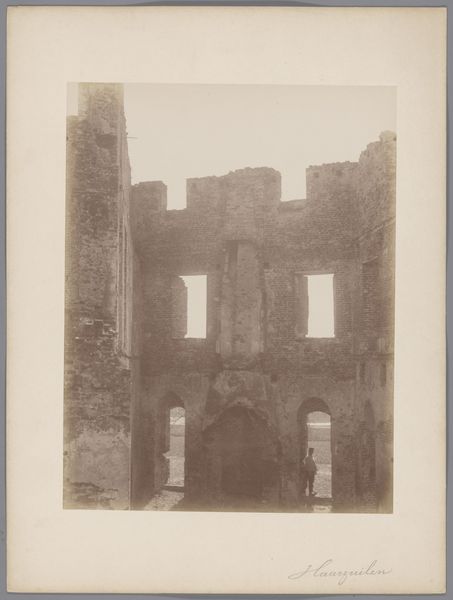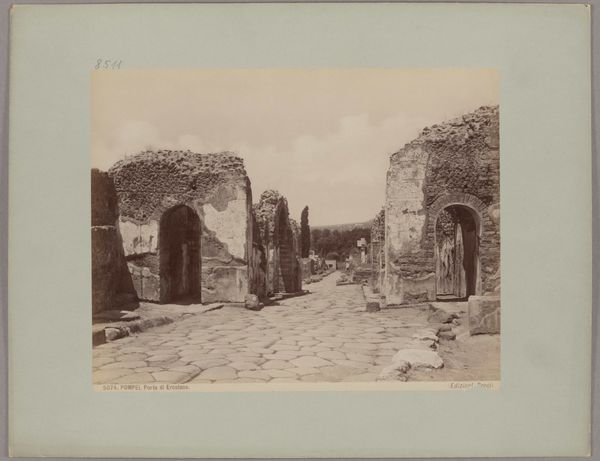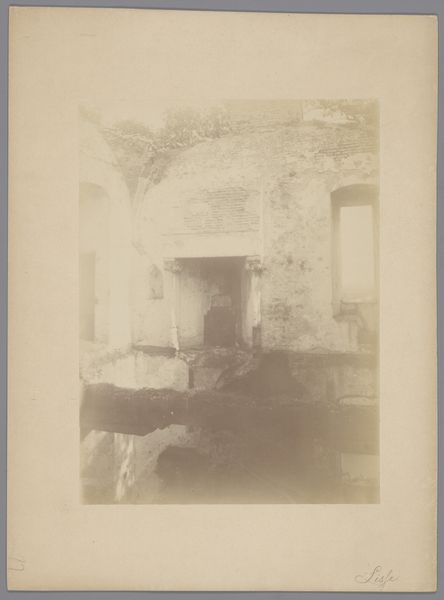
Dimensions: height 233 mm, width 175 mm
Copyright: Rijks Museum: Open Domain
Editor: Here we have an anonymous photograph from 1892, "Ruïne van Kasteel de Haar te Haarzuilens"—that's "Ruins of de Haar Castle in Haarzuilens." The sepia tone gives it this haunting, old-world feeling. I can almost hear whispers from the past! What's your take on it? Curator: It really does whisper, doesn't it? This photograph captures more than just crumbling stone. Think about the late 19th century, a time obsessed with history, with authenticity. Photographing ruins wasn't just documenting decay; it was about romanticizing it, about finding beauty and lessons in the past. Look at how the light catches those crumbling walls; it's a painterly effect, isn't it? Almost theatrical. Do you think that was intentional? Editor: Oh, definitely! It’s like the photographer staged the scene for maximum drama. Did this romanticization have a broader impact? Curator: Absolutely. It fuelled preservation movements, historical societies, even architectural revivals. People saw these ruins and thought, "We must save our heritage!" It’s funny, isn’t it? A picture of something falling apart becomes a catalyst for rebuilding, both literally and figuratively. It's a paradox wrapped in sepia. Editor: That's so true! It's like, the ruin inspires repair. I'm going to see ruins differently now. Thanks for shining a light on this photograph. Curator: And I learned to look past the staged aspect to see its impact. Wonderful!
Comments
No comments
Be the first to comment and join the conversation on the ultimate creative platform.
